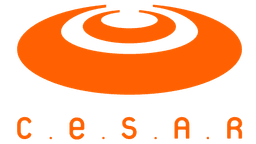4 mins to read
CESAR .
Publicado em: 31 de março de 2023
The Internet of Things transforming the healthcare market in Brazil

Chronic Obstructive Pulmonary Disease (COPD) is the fourth main reason for hospitalizations in the Brazillian healthcare system and the fourth leading cause of death in the world. In 2018, the Unied Health Care System (known for its acronym in Portuguese SUS) registered over 110K emergency admissions, mainly due to non-treatment and rehabilitation, with a direct cost of more than R$100M.
According to data from the Brazilian Society of Pulmonology and Tisiology, more than 6M Brazilians are affected by the disease, but only 18% of this total received a diagnosis and are being treated with medical oxygen, whether it’s in hospital beds or at home with HCPs receiving home care.
This oxygen is stored and transported in cylinders, which need to be replaced accurately and regularly, since delays can result in damage to patients’ health -, in some cases leading to death. However, it is common to encounter some logistic and bureaucratic hurdles during this monitoring and replacing process of the cylinders.
It was in this context that Salvus, a startup specialized in emerging technologies for the healthcare sector, invited CESAR to collaborate in the development of a solution that would make the management of oxygen consumption more precise, safe for patients, practical and also cost-effective for companies.
From this partnership emerged ATAS O2, a device that takes the Internet of Things to patients’ beds and monitors oxygen consumption and stock in real time, sending this information to a system through which the responsible company can manage the supply process.
The solution was contemplated by the public notice “Pilotos em IoT”, of the BNDES (National Bank for Economic and Social Development), and received an investment of around R$ 1M from the entity, to test large-scale IoT solutions for the healthcare sector. In addition, the project received funding from Embrapii (Brazilian Company for Industrial Research and Innovation) through CESAR, which is the Embrapii unit for Connected Products, and from Salvus.

Our approach
The challenge was to develop a device that had the autonomy of a robot, with connectivity and a battery of its own that was not dependent on the structural circumstances of the homes or hospitals where it was allocated. In addition, it was important that it did not require complex configurations – to facilitate the handling of healthcare professionals – and that would promptly be functional when switched on.

CESAR collaborated with the expertise in the technological innovation process, alongside Salvus, evolving the product through several phases of design, electronic, mechanical and software engineering.
This partnership developed the process from the initial phases of user research and survey of usage scenarios to the development and validation cycles of the solution, providing constant improvements in several versions of the prototype created.
The technology chosen to connect the devices was Sigfox, provided by WND – the technology provider in Brazil. The network operated by WND with Sigfox technology is exclusive for IoT with wide coverage in the national territory, and currently has more than 150M messages transmitted per month.
Results
The final result was ATAS O2, a device coupled to the oxygen cylinder and a web monitoring system for total automated management of the stock and consumption of medical oxygen.
With this solution, you can estimate the expected time in hours for the end of the medical oxygen load by analyzing oxygen consumption in liters per minute in real time for a given patient. Through a device attached to the cylinders, the sensors can monitor the oxygen flow and get the desired responses.
ATAS provides more predictability not only regarding the need to replenish the patient’s oxygen supply in a home care setting or in a hospital, but also creates a comparison between what has been prescribed and what the patient is actually consuming, contributing to the clinical analysis of the user’s condition.
The solution is constantly evolving with real market feedback, making it always compliant to people’s real needs, but it has already enabled a reduction to the operational burden of medical oxygen management and streamlined the process for caregivers, hospitals and home care companies.

